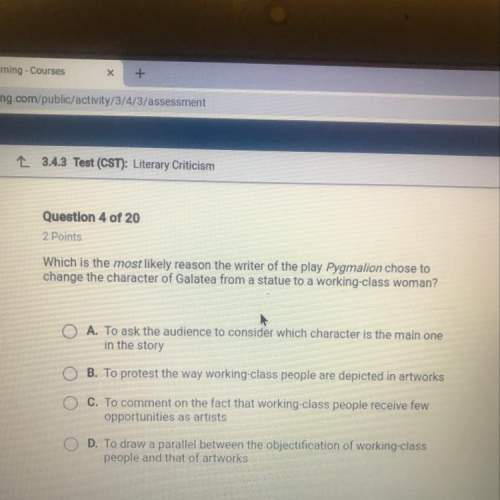
During photosynthesis, plants take in carbon dioxide, water, and energy from the sun and produce carbohydrates and oxygen. Which of the following statements best explains how plants follow the law of conservation of mass during photosynthesis?
The amount of each element in the reactants equals the amount of each element in the products.
The number of carbon dioxide molecules taken in exactly equals the number of carbohydrate molecules produced.
The plant uses the carbon dioxide gas, liquid water, and energy to produce a solid carbohydrate.
The plants mass does not increase or decrease as a result of photosynthesis.

Answers: 2
Other questions on the subject: Biology

Biology, 22.06.2019 02:20, jothianddeepi
Humans are believed to have evolved in coastal regions in east africa. the region had an abundant supply of fish for early humanoids to eat. when scientists analyze the fads gene they see an interesting pattern. people whose families have lived in this area of east africa for generation show a high level of diversity in alleles for the fads gene. conversely, people whose families had migrated inland a moderate distance from sources of fish showed a much lower diversity for fads gene alleles. additionally, the fads alleles found in people whose family has lived inland for generation are almost all gene alleles which produce fads proteins with a high level of function and activity. how do anthropologists explain this?
Answers: 3

Biology, 22.06.2019 11:00, erinolson07cats
What is the best conclusion based on this data? the hypothesis was not supported because the data indicated that fertilizing plants does not improve plant growth. the hypothesis was supported; to get the best growth, use 5 milliliters of fertilizer per plant. the hypothesis was not supported; the data indicated that too much fertilizer can inhibit plant growth. the hypothesis was supported; to get the best growth, use 15 milliliters of fertilizer per plant.
Answers: 2

Biology, 22.06.2019 11:30, brayden2275
To store strawberries in sugar syrup, lucy placed them in a jar and covered them with sugar but did not add any water. do you think syrup will be formed? justify. a. no. since water is not added, there cannot be any syrup formation. b. no. the higher concentration of sugar on the outside will cause the water from the sugar to diffuse in the strawberry cells causing them to swell without formation of any syrup. c. yes. the higher concentration of sugar on the outside will cause the water from the strawberry to diffuse out resulting in syrup formation. d. yes. the sugar will melt over time and form the syrup.
Answers: 2

Biology, 22.06.2019 14:50, trishinada63
What do we call an individual that has inherited two identical alleles for the same trait? a. homozygous b. heterozygous c. monozzygous
Answers: 2
Do you know the correct answer?
During photosynthesis, plants take in carbon dioxide, water, and energy from the sun and produce car...
Questions in other subjects:


Mathematics, 08.10.2019 22:00


Mathematics, 08.10.2019 22:00

History, 08.10.2019 22:00

Biology, 08.10.2019 22:00

Biology, 08.10.2019 22:00

Mathematics, 08.10.2019 22:00


Social Studies, 08.10.2019 22:00







